Seven years ago I was in Hanoi on assignment for Saveur magazine. My task was to explore Hanoi-style pho for a column called “Classics.” I’d done lots of reading and research and knew about ingredients like peanut worms (sa sung), which are used for umami in pho. I arrived in the capital thinking I’d be talking to local chefs about the worms, which seemed strangely and unique to the northern pho experience. But what I didn’t expect to encounter during my Hanoi pho experiences was dam toi garlic vinegar. Just like the above photo show, the vinegar appeared in plastic containers with long spoons for people to help themselves. It was on tables at nearly every pho shop I visited. It's what Hanoians expected, like the hoisin and sriracha bottles we expect to see at pho shops in the States.
When I saw the vinegar, I was skeptical. Northern pho diehards usually don’t add lime or the like to their bowls, so where did the garlic-infused vinegar come into play? I asked a gal who was around my age, and she said she’d always had it with pho.
I sprinkled some into my beef pho and it added a wonderful, delicate bright note. The garlic didn’t hit me on the head but rather lent a pungent edge to the mild vinegary tang, which amplified the broth without taking it in a totally different direction as a squirt of lime would.
Fast forward to 2015 when I returned to Hanoi specifically for pho cookbook research and to verify that things hadn’t changed too much. I saw the garlic vinegar again and knew it had to go into the book. Garlic vinegar is part of the Hanoi pho palate, which is nuanced and subtly graceful.
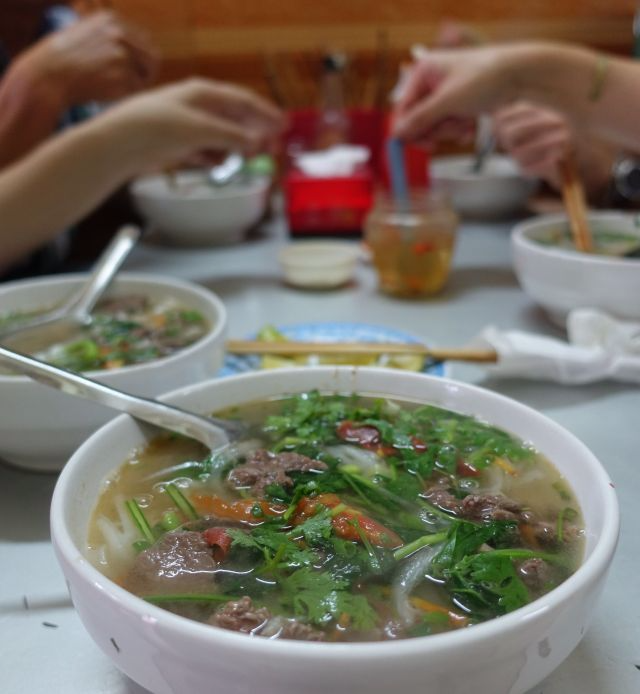
Is the vinegar traditional and authentic? My parents were born in northern Vietnam and when I asked them about the garlic vinegar, they didn’t recall it. My cousin Huy is in his 50s and born and raised in Hanoi. He still lives there and was a little vague about how long it’s been part of the pho scene. He’s not a huge food person, but rather a journalist and political observer and commentator.
People are into big flavors these days and sometimes overlook the need for balanced flavors, which is how you can taste complex layering of flavors. Until recently, I’d only seen the garlic vinegar in Hanoi and my own home. My friend Eric Banh at Ba Bar in Seattle said he’s been toying with it. Last month, Robert Sietsema reviewed Hanoi House in New York and mentioned the garlic vinegar.
Maybe dam toi garlic vinegar become a popular thing? Make some and be ahead of the pho curve. It takes 5 minutes and an overnight aging. The recipe below is from The Pho Cookbook and included in the “Pho Add-ons” chapter along with other easy DIY pho condiments.
Pho is funny because despite what we think it is, it’s not a fixed food. People have always tweaking things, adding embellishments. In Saigon, there are heaping platters of bean sprouts and many kinds of herbs, not just Thai basil! In Hanoi, there’s the vinegar and other sometimes nearly ripe limes, which have yellowish flesh and sweet-tart notes. Some people love a lemongrass-chile-dried shrimp mixture called sot sa-te (sate sauce in the above photo) in their pho. So go ahead and play with your pho. You can turn out fabulous bowls but understanding pho's foundations is key.
How to use garlic vinegar? For recipes in my pho book, dam toi garlic vinegar works its magic on noodle soup, panfried and stir-fried noodles, fried rice, and dumpling dipping sauce. When you’re cooking from the book, reach for the vinegar when a dish needs a slightly tart top note to balance flavors. In my kitchen, I often splashed it into sautéed or stir-fried kale, broccoli rabe, and chard toward the end of the cooking time. Don't limit yourself to using this vinegar just for pho.
Garlic Vinegar (Dam Toi)
Yield ¾ cup
Hanoi cooks often slice or chop the garlic, but bruising the cloves prevents the garlic from wandering into your food. When the vinegar runs out, add new ingredients to the old ones in the jar. When things taste tired or off, start over.
Ingredients
- 2 cloves garlic, smacked with the broad side of a knife
- 2 Thai chiles or 1 large serrano chile, partially split lengthwise
- ¼ cup unseasoned Japanese rice vinegar
- ½ cup water
Instructions
- Combine all of the ingredients in a jar. Cover and age it in the refrigerator overnight.
- The next day, check the flavor: The main zing ideally comes from the garlic, with the chile playing a minor supporting role. If the garlic or chile is too harsh, add more vinegar and water, starting with a 1:2 ratio. Increase or decrease the amount of garlic, depending on its pungency and your preference. For extra chile bite, double the quantity and see what happens.
- You can use the vinegar the day after it’s made. It keeps in the refrigerator for months, so feel free to tinker with it over time. For practicality and authenticity, present the condiment with a teaspoon for guests to help themselves.
Notes
Recipe source: The Pho Cookbook (Ten Speed Press, 2017)
Related pho posts:
- How to Grow Mung Bean Sprouts
- How to Buy Pho Rice Noodles
- How Pho Rice Noodles Are Made
- How to Keep Viet Herbs Fresh
- Pressure Cooker Advice: Stovetop or Electric?
- How to Find Good Bones for Beef Pho
- Pho Secret Ingredient: Sa Sung Peanut Worms
If you've got a Hanoi garlic vinegar experience to share, let us know your thoughts!













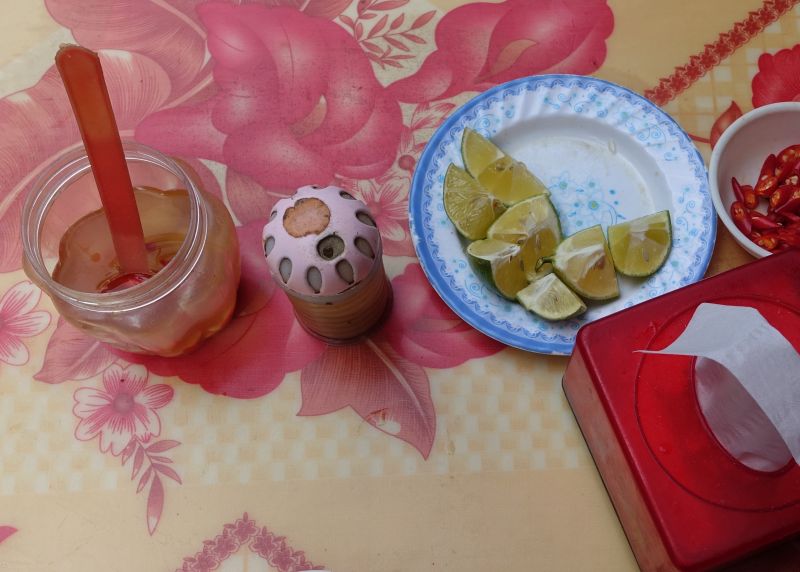
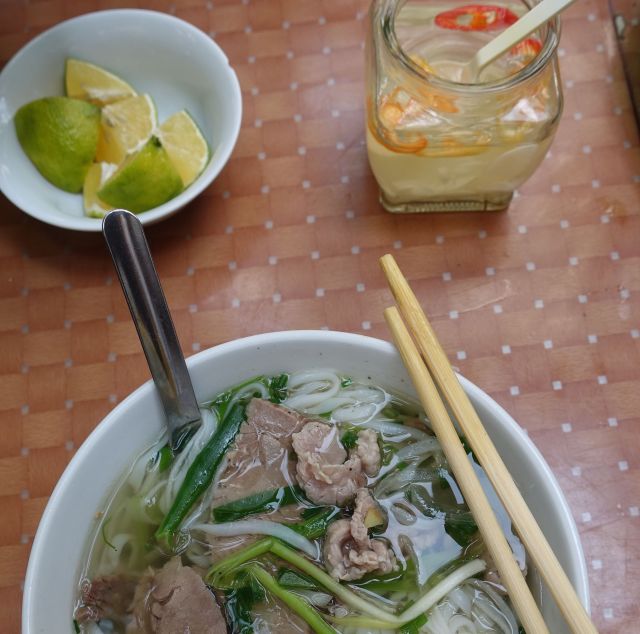
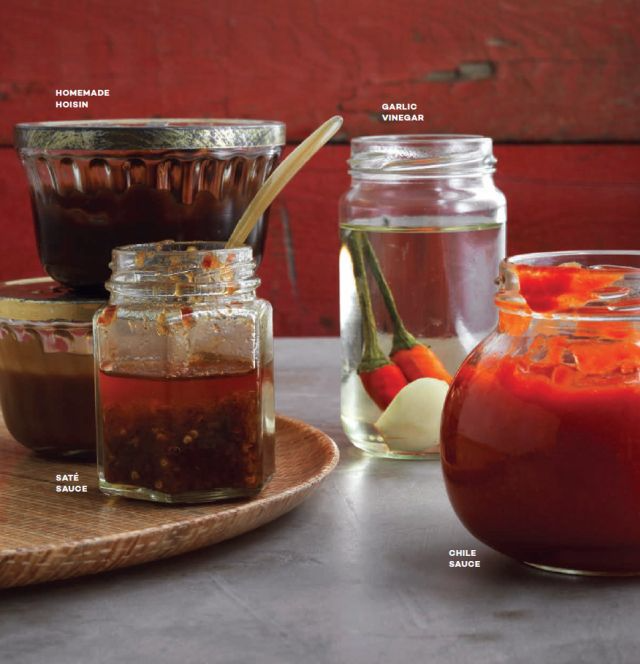
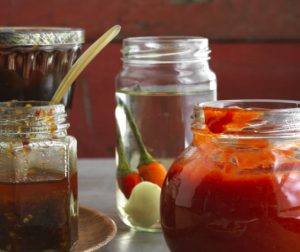




jen says
Can I use pickling vinegar on this recipe?
Andrea Nguyen says
I think so, though I had to Google "pickling vinegar" but it's murky. The Marukan brand of rice vinegar (4.3% acidity) used here is milder than regular distilled. What is the acidity of your "pickling vinegar"? Compare and then guess-timate. You can always dilute or add more vinegar or garlic! That's what I would do.